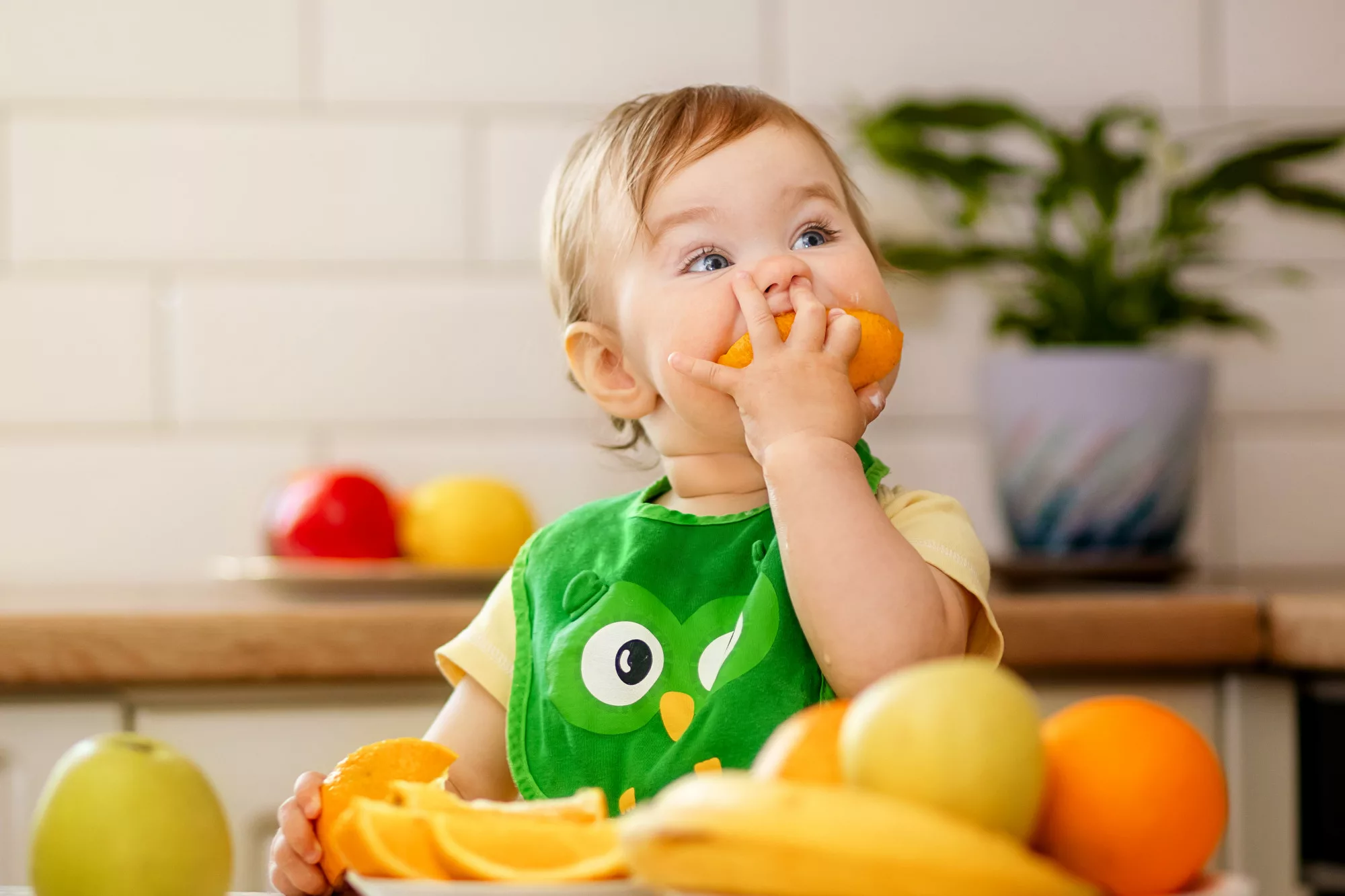
Fiber is an important nutrient that offers a wide range of health benefits for adults and kids alike. Toddlers who get enough fiber can maintain a healthy digestive tract and face a reduced risk of health problems including obesity, heart disease, and cancer. The recommended fiber intake for children between the ages of one and three is 19 grams a day.
Getting toddlers to eat high-fiber foods isn’t difficult at all, as this nutrient is already in many of their favorite foods! Here’s a look at four high-fiber food groups that can keep your kids healthy and regular well throughout childhood and into adulthood.
1. Fruits
Nearly all fruits are high in fiber. Fruits with the highest amounts of fiber include raspberries, prunes, raisins, pears, and apples. One cup of raspberries contains about 8.4 grams of fiber, and one medium-sized pear has about 4 grams of fiber.
Apples with the skin on contain more fiber than peeled apples without skin, and whole apples contain more fiber than applesauce (3.7 grams vs 2 grams per serving).
Serve your toddlers fruit with every meal, and as snacks in between meals. Stick to whole fruits, as whole fruits generally contain far more fiber than fruit juices. Also, keep in mind that if you put fruits through a juicer, most of the fiber will be lost during the juicing process.
Try to avoid buying fruit cups, which usually contain lots of sugar and syrups. If your toddlers love fruit cups, make your own healthy versions at home using chunks of fresh fruit and low-sugar lemonade, apple juice, or coconut water.
2. Vegetables (Including Beans)
Vegetables are another great source of fiber, and like fruits, are loaded with a variety of vitamins, minerals, and other nutrients that provide lots of health benefits. Vegetables that contain the highest amount of fiber per serving include artichokes, canned pumpkin, baked potatoes, and peas. One medium-sized boiled artichoke contains about 6.2 grams of fiber, and a half cup of canned pumpkin has about five grams of fiber.
Beans, which fall under the vegetable category, contain even higher amounts of fiber. One cup of pinto beans has about 14.7 grams of fiber, and a cup of baked beans has about 14 grams of fiber. When serving beans to your toddlers, stick to dried beans that can be made on the stovetop or in a pressure cooker. Many brands of canned beans are high in sodium and may also contain other less-healthy additives.
3. Whole Wheat
Whole wheat foods are rich in fiber compared to their refined counterparts. Breads, pastas, and crackers are all available as whole wheat products. One slice of whole wheat bread contains about two grams of fiber, and one cup of whole wheat spaghetti contains about 6.3 grams of fiber.
Take a look in your cupboards to see which foods you can replace with whole wheat versions. Swap out white bread for whole wheat bread, and white pasta noodles for whole wheat noodles.
Read the ingredients and nutrition labels on all whole wheat products to make sure they lack sugars and additives, and to confirm they are high in fiber. Sometimes, it can be easy to confuse whole grains with whole wheat, which may not necessarily contain as much fiber. Fiber is labeled as “Dietary Fiber” under “Total Carbohydrates” on most Nutrition Facts labels.
4. Cereal
Breakfast cereals can be a great option when it comes to choosing high-fiber foods, as long as they aren’t loaded with sugars, marshmallows, and dyes or food colorings. If you have to go with cereals that seem too bland for your toddlers, consider adding a spoonful of peanut butter or chunks of fresh fruits like bananas, strawberries, or blueberries to liven up the taste.
When buying cereals, read the ingredients labels and nutrition facts to make sure they contain a good amount of fiber and very few additives.
Nuts and seeds are other good high-fiber options. If your kids are new to eating nuts and seeds, give them very small amounts at a time and watch for any allergic reactions. Nut allergies are among the top food-related allergies, especially peanuts and cashews.
Talk to your children’s pediatrician if you are concerned that your toddlers aren’t getting enough fiber from the foods they eat. Your healthcare provider can work with you to improve your children’s nutrition, and may even refer you to a nutritionist or dietitian, if necessary.
Resource Links
- “What Do We Know about Dietary Fiber Intake in Children and Health? The Effects of Fiber Intake on Constipation, Obesity, and Diabetes in Children” via Advances in Nutrition
- “Fiber in Foods Chart” via C.S Mott Children’s Hospital Michigan Medicine